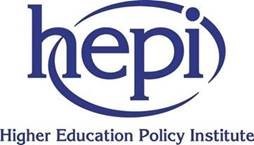Widening access is working - why won't we admit it?
Back
This blog was initially published on the HEPI website here.
UCAS’s recent end-of-cycle report showed that the number of students going to higher education from the country’s lowest-participation neighbourhoods has increased by more than 50% since 2013. In a different time, the news would have been a cause for wider celebration. However, against the backdrop of a Government more concerned with what happens when students finish higher education and another re-boot of widening access work, this remarkable achievement has passed by relatively quietly. It deserves far more recognition and certainly more exploration. The increase in applications from local areas with the lowest rate of participation, or POLAR quintile 1 neighbourhoods, has been steady from 2013 to 2021, as the graph below shows. The last two years have seen quite a rapid jump, associated to an extent with changes in how young students’ examinations have been graded due to COVID (although those from more affluent backgrounds appear to have benefited disproportionately), but progress has been visible since the early 2010s.
Proportion of UK domiciled 18-year-olds who made applied by the January deadline
 This diagram shows that the proportion of UK domiciled 18-year-old students applying to HE by the January deadline for each of the 5 POLAR quintiles has increased for each quintile group over the period 2013 to 2022. For POLAR Quintile 1 the % of 18-year-old students applying for HE increased from 17.8% in 2013 to 28% in 2022. This information can be found here.
This diagram shows that the proportion of UK domiciled 18-year-old students applying to HE by the January deadline for each of the 5 POLAR quintiles has increased for each quintile group over the period 2013 to 2022. For POLAR Quintile 1 the % of 18-year-old students applying for HE increased from 17.8% in 2013 to 28% in 2022. This information can be found here.
Unfortunately, the gap between those from POLAR Q1 and the highest-participation neighbourhoods has not diminished; however, even given the question marks around how many individual students from lower socioeconomic backgrounds actually reside in POLAR Q1 neighbourhoods, it is still impressive progress. It is so impressive, in fact, that it demands some re-thinking in how we look at widening access work.
In his first speech since gaining office, the new Director of Fair Access and Participation, John Blake, repeated the familiar mantra about evaluating widening access work. It has now become an accepted trope that there needs to be more evaluation of widening access activities, so we know what works. Universities need to try and undertake random controlled trials of their activities to see what intervention is most effective and now apparently find willing academics who will provide external evaluation for free or buy in what may be over-priced consultants. Underpinning this whole narrative is the insinuation that money invested in widening access is being wasted.
I wholeheartedly agree that we need to understand as far as possible what widening access interventions work. Via the organisation I lead, NEON, I have trained staff from more than 100 universities in evaluation skills over the last five years. But I have also long questioned whether widening access work is held to much higher standards than the rest of the investment made in higher education, and that obsessing over whether every activity a university delivers is evaluated or not may be counter-productive. The money spent on widening access work is a tiny fraction of the whole spend on higher education. We do not spend anywhere near as much time evaluating the practice of teaching and learning as we do trying to evaluate widening access work. It happens for sure, but most of those in higher education do not question the inherent worth of teaching in a way that those in widening access have had much of their work questioned for decades and not just by policymakers but also, depressingly, by some of their colleagues in universities.
Rather than a micro-managed approach to evaluation, with universities being encouraged to crowbar experimental design into their work when they just don’t fit the majority of widening access activities, the focus should be on better understanding the reasons behind this success story. Not only has this progress been achieved in a country charging the highest university tuition fees per capita in the world, with a government whose commitment to widening access has waxed and waned, but it has also occurred in era where progress on educational inequality overall has been stagnant. In 2017, the Social Mobility Commission undertook an assessment of government policies on social mobility from 1997 to 2017 looking at the progress made in addressing different forms of educational inequality from the attainment gap in Level 3 qualifications to youth unemployment including access to higher education amongst disadvantaged students. Access to higher education was one of only two areas rated as making significant progress.
But we still do not know enough about why this progress has been made and how much of it is really due to widening access work. There may be other factors at play here, such as improvements in teaching or the support that colleges and schools are offering students themselves. Whatever the real story is, it is on the contribution to these results that widening access activities should be judged. This is why NEON will be concentrating its research efforts over the next six months on precisely this issue. Working with our members, we want to better understand what impact widening access work is really having. We will explore the combination of factors that are interacting together to drive up progression to higher education from low participation neighbourhoods. If we can do this, then more than 20 years after we really started investing effort in widening access work in this country, we can finally lay to rest the myth that these efforts have not been worth it.
Prof Graeme Atherton is Director of the National Education Opportunities Network (NEON) and Head of the Centre for Inequality and Levelling Up (CILUP) at the University of West London.


